I posted this on Twitter earlier, so apologies if you’ve already seen it.
It’s World Swift Day today, so here’s something about hummingbirds.
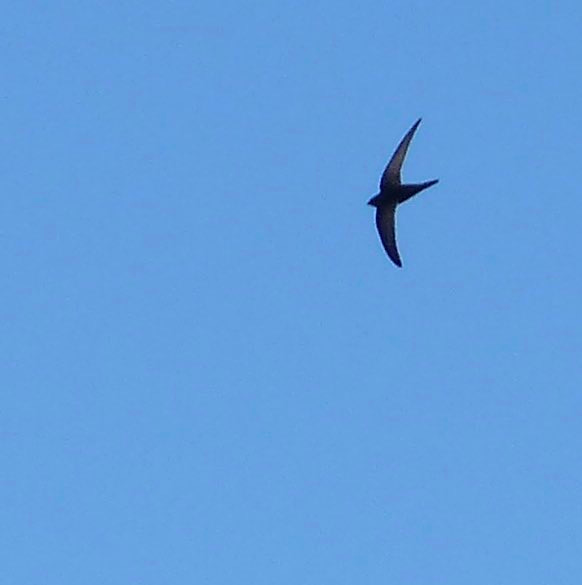

That’s not the non sequitur you might think. A lot of people lump swifts in with swallows and martins, which are members of the hirundines. And for a long time they were thought to be related. That’s understandable – they’re all small and whizzy.
But while hirundines might look and behave similarly, they aren’t the swifts’ closest relatives. It’s now generally agreed that that privilege falls to the hummingbirds.
Their most recent common ancestor is this bird. Eocypselus rowei, known from this very detailed 50.6 million-year-old fossil from the Green River Formation in Wyoming.
Eocypselus was neither a hoverer like the hummingbirds nor a dasher like the swifts, but its descendants would come to master flight, each in their own way.
Hummingbirds went to one extreme, developing a special ball-and-socket shoulder joint (which enables them to produce lift on the upstroke and the downstroke). They also have the fastest metabolism of any vertebrate.
But while they evolved the ability to hover in front of the flowers with which they co-evolved, sipping nectar and spreading pollen, the chief asset of swifts is speed. Speed and agility. Speed, agility and a fanatical devotion to the air.
There are 112 species of swift in the world, and while the hummingbirds are restricted to the Americas (damn you, Americas), the distribution of swifts is almost global.
Whatever the species, and whatever the size (from the 9cm Pygmy Swiftlet of the Philippines to the 25cm of the White-naped Swift of Mexico), all swifts conform to a similar body plan.
Their cigar-shaped bodies and powerful, swept back wings make them well suited to lives lived predominantly in the air, where they became master hunters, catching up to 10,000 insects a day.
Their cousins built their lives around flowers, but swifts are as likely to hang around near flowers as [humorous example of unlikeliness].
This is reflected in their beaks, short nubs for snapping insects in midair, rather than the fancy-shmancy bill shapes of hummingbirds which are adapted to the trumpet shapes of their food plant flowers.
And while hummingbirds are notoriously flashy in appearance, often with stunning iridescent plumage, the mood board of swifts is overwhelmingly dark grey, black and brown.
They share one anatomical feature with hummingbirds: shrunken hind limbs. Hummingbirds can perch, but often not much more than that. Swifts do not perch, although they can cling to vertical surfaces with their surprisingly strong toes.
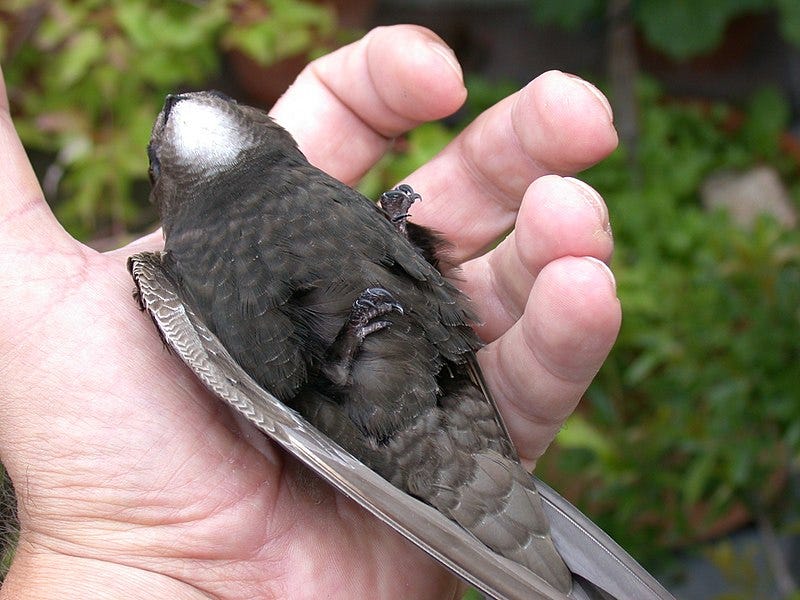
Their weakness on the ground led to the scientific name of the family: Apodidae, or ‘no-footers’. And the Common Swift found in the UK is Apus apus (‘no-foot no-foot’).
It ranges across Europe and Asia in the breeding season, wintering mostly below the equator in Africa. Their arrival back in these parts every May is met with cries of hoopla (and yes, a few tears).
Ours have been in their nests for about a week now, so I’m hoping there will be eggs.
After about three weeks, between one and four chicks will hatch (usually two or three), and they will then be fed by their parents with wads of insects (up to 500 per wad).
About three weeks later they’ll start to get restless, and will begin strengthening their wings with push-up exercises in preparation for their first flight. Depending on weather conditions, they’ll be ready to go between five and eight weeks of hatching. And the very best of luck to them – central Africa is a long way.
Globally, the Common Swift isn’t threatened, but in the UK they’ve suffered a sharp decline in the last couple of decades. One possible factor is loss of nesting sites. (Don’t close up those eaves, and urge everyone to install swift bricks or nest boxes.)
Swifts and hummingbirds redefine what it is to be a bird, taking the aerial life to its limits. Eocypselus rowei would be very proud. Happy World Swift Day!





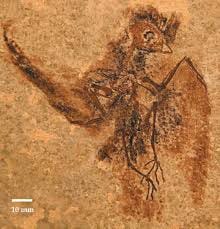
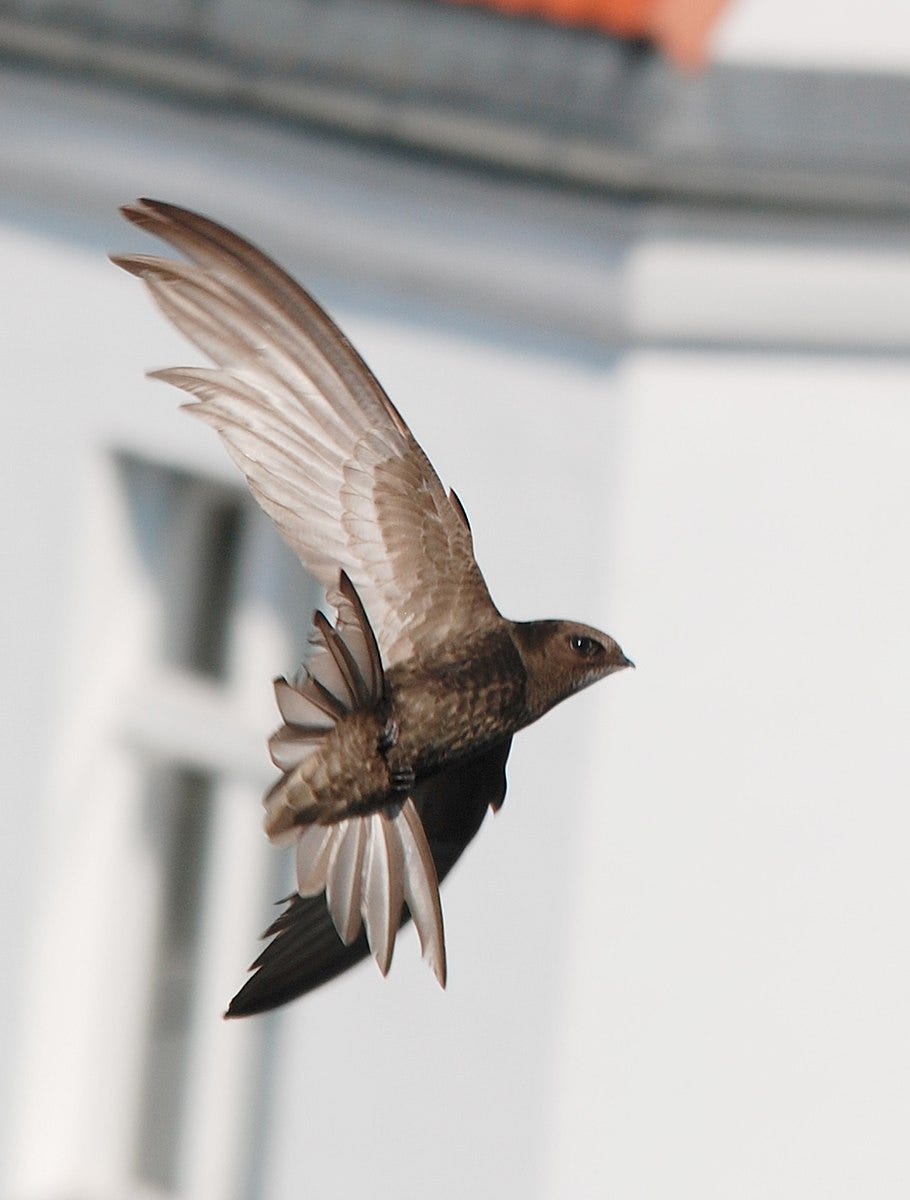


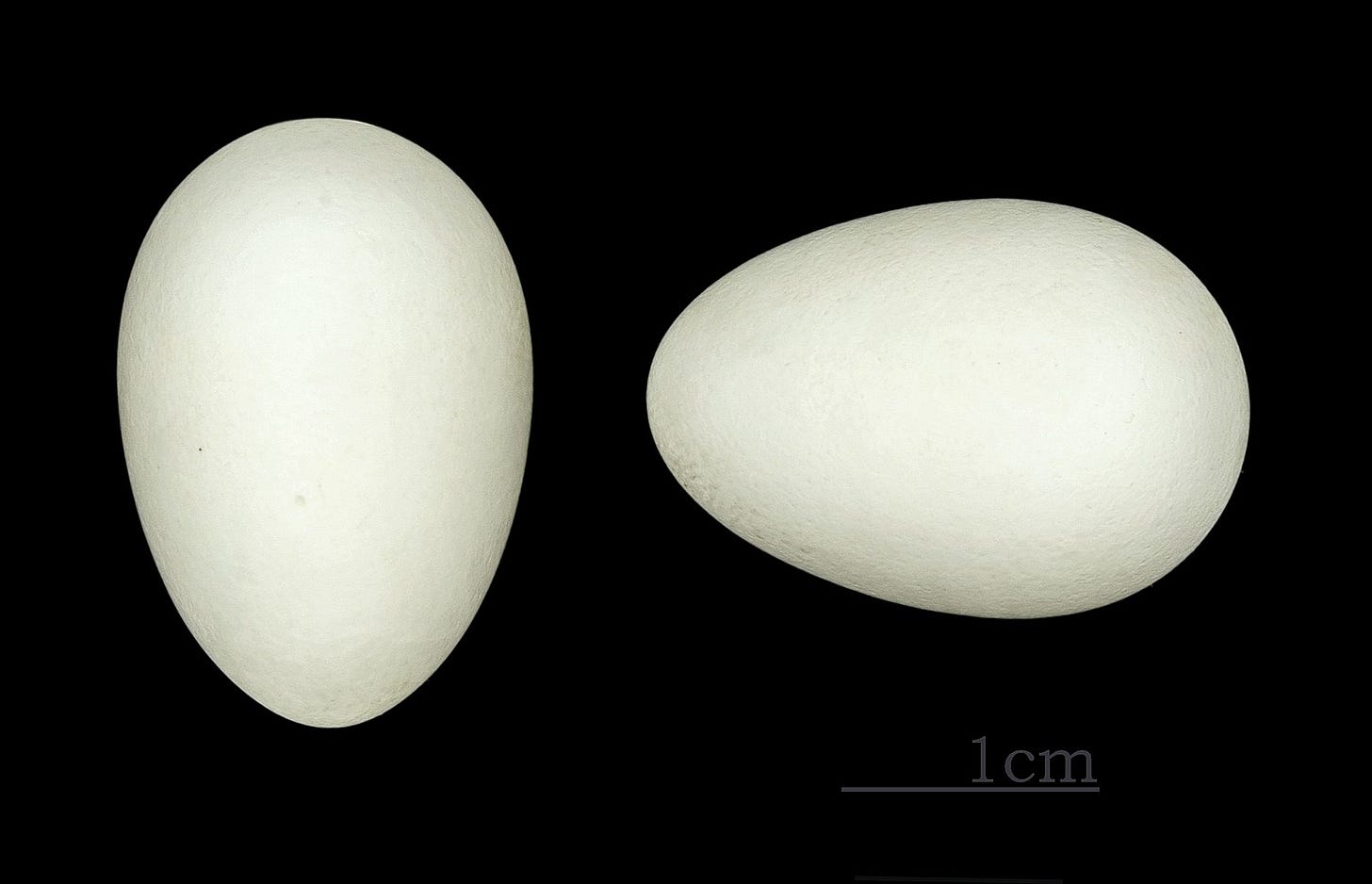
Thanks for sharing this. I’ve been working on a project where I live in Bristol to get swift boxes installed. So far we have got 10 boxes up.
No-one expects the hummingbird connection.
Well my tiny mind is now blown by swifts not being related to swallows and martins. Thank you once again for educating me, Lev.